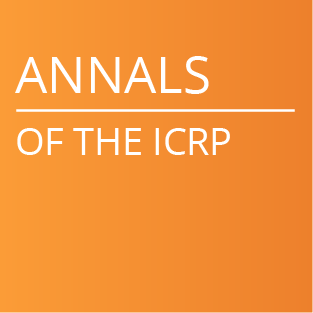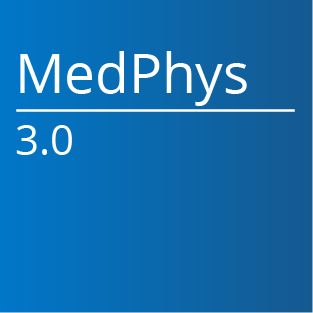|
TABLE OF CONTENTS
1. Executive Summary
2. Purpose
3. Statement of Objectives
4. Spending Policy
5. Duties and Responsibilities
6. Investment Policy and Guidelines
7. Guidelines for Portfolio Holdings
8. Control Procedures
9. Adoption Statement
EXECUTIVE SUMMARY
American Association of Physicists in Medicine
Fund Name: Education and Research Fund
Fund Type: Exempt Operating Foundation
Date Established: November 10, 1989
Federal Tax ID#: 23-7057224
Investment Time Horizon: 10 to 20 years
Risk Tolerance: Moderate Volatility Consistent with Portfolio Benchmark
Portfolio: Asset Allocation Strategy
PURPOSE
This document establishes
the Investment Policy Statement for American Association of Physicists in
Medicine (AAPM) and is designed to assist in effectively supervising,
monitoring and evaluating the investment performance of the AAPM Education and
Research Fund's (Fund) investment assets. A thorough investment program is
defined throughout this document to achieve the following:
‧ Document the American Association of Physicists in Medicine's investment
objectives, performance expectations and investment guidelines for Fund assets.
‧ Establish an appropriate investment strategy for managing all Fund assets,
including an investment time horizon, risk tolerance ranges and asset
allocation. The goal of this strategy is to provide sufficient diversification
and overall return over the long-term time horizon of the Fund.
‧ Establish investment guidelines to control overall risk and liquidity, within
the agreed upon investment strategy.
‧ Establish periodic performance reporting requirements that will effectively
monitor investment results and ensure that the investment policy is being
followed.
‧ Comply with fiduciary, prudence, due diligence and legal requirements for
Fund assets.
The Board of Directors of
the AAPM maintains responsibility for approving this Investment Policy
Statement and for any changes made to the Statement. The Board of Directors maintains the ultimate
oversight of the Fund but does grant the AAPM Investment Committee the
authority to maintain the Fund's operations, including the approval of
transactions. The Board of Directors of
the AAPM, with the assistance of the AAPM Investment Committee, has arrived at
this Investment Policy through careful study of the returns and risks
associated with alternative investment strategies in relation to the current
and projected spending policies and fund raising requirements of the Fund. This
policy has been chosen as the most appropriate policy for achieving the
objectives of the Fund, which are described in the Objectives section of this
document.
STATEMENT OF OBJECTIVE
The objective of the Fund
shall be defined as:
‧ To preserve and enhance the purchasing and earning value of the funds held in
the Fund.
‧ To seek an average annual real rate of return of 4%, or total return of CPI
plus 4%. This objective shall be measured over a 10-20 year time frame, with
the intent of this objective to preserve, over time, the principal value of the
assets as measured in real, inflation adjusted terms.
‧ To seek competitive investment performance versus appropriate or relative
benchmarks. This objective shall be measured primarily by comparing investment
results, over a 10-20 year time period.
SPENDING POLICY
The Board of Directors
will approve, at its discretion, expenditure of assets from the Fund. Expenditures are typically reserved for
annual fellowship and residency positions as well as periodic, variable grants. It shall be the Board's responsibility to
periodically review the spending policy of the Fund to make adjustments
necessary to preserve the purchasing power of the Fund. The Board shall promptly communicate any
changes in the spending policy to the Investment Committee.
Protection and growth of
the corpus - assets contributed as donations - of the Fund is expected. A maximum of 5% of the fund may be withdrawn annually. Care will be taken so that the spending
policy will not result in a withdrawal rate that will eventually invade the
corpus of the Fund unless it becomes the desire of the Board of Directors to
allow the corpus to be invaded. Only the
Board has the ability to approve invasions of the corpus of the Fund.
DUTIES AND RESPONSIBILITIES
The AAPM Board of
Directors grants authority to the AAPM Investment Committee to maintain the operation
of the Fund. Specifically, the
Investment Committee is responsible for managing the investment process in a
prudent manner with regard to preserving principal while providing reasonable
returns. In carrying out these duties, the AAPM Investment Committee may retain
an Investment Adviser to assist in managing the assets of the Fund. The
Investment Adviser's role is to provide guidance to the Board on matters
pertaining to the investment of Fund assets including investment policy,
investment selection, monitoring Fund performance and compliance with the
Investment Policy. All decisions pertaining to the implementation of the Board
approved investment policy and guidelines for the Fund shall be made by AAPM
Investment Committee. Individual duties
and responsibilities are detailed below.
Duties of the AAPM
Investment Committee:
‧ Retain a qualified Investment Adviser to assist in the development and
implementation of the investment policy, (e.g., goals, objectives, and
guidelines).
‧ Make recommendations to the AAPM Board of Directors regarding the operations
of the Fund including allocation between equity and fixed income assets,
selection of acceptable asset classes and investment performance expectations.
‧ Regularly review investment performance of the Fund including the performance
of the Investment Adviser to assure the policy is being followed and progress
is being made toward achieving objectives.
‧ Report
investment results to the Board of Directors on an annual basis.
‧ Every five
years, submit a written review to the Board of Directors whereby the committee
has performed a systematic and comprehensive review of the fund's objectives,
management experience and investment policies.
‧ Work with the
Board of Directors with respect to the process of awarding scholarships and
grants to individuals or institutions in furtherance of the AAPM's tax-exempt purposes, from the assets of the Fund.
Duties of the
Investment Adviser:
‧ Assist the AAPM to
establish the investment policy and guidelines contained in this Investment
Policy Statement.
‧ Determine an investment strategy and coordinate the asset allocation process.
This strategy shall be within investment policy guidelines as set forth in this
statement.
‧ Monitor asset allocation
among all asset classes and verify on a monthly basis that allocations are
within targets defined by this investment policy statement and realign the
Fund's investments to ensure that the target asset allocation described in this
Statement is maintained.
‧ Monitor the investment performance
of the Fund and provide quarterly performance advisory reports to the AAPM
Investment Committee and the AAPM Board of Directors.
‧ Report in a timely manner substantive developments that may affect the
management of Fund assets.
INVESTMENT POLICY AND GUIDELINES
Fund assets will be held in an investment portfolio with an active strategic
asset allocation strategy. This portfolio will be invested exclusively in
mutual funds and/or similarly structured pooled funds (pooled investment
vehicles) including exchange traded funds. As a result, assets held in this
portfolio will be well diversified and highly liquid.
The Investment Adviser for each pooled investment vehicle is responsible for
managing the assets of each fund in accordance with the stated objectives and
policies of that fund as set forth in each vehicle's prospectus and/or
statement of investment policy.
Time Horizon
Fund objectives are based on a 10-20 year investment horizon, so that interim
fluctuations should be viewed with the appropriate perspective. The American
Association of Physicists in Medicine has adopted this investment horizon such
that the chances and duration of investment losses are carefully weighed
against the potential for appreciation of assets.
Diversification
Investments shall be diversified with the intent to minimize the risk of large
losses to the Fund. Consequently, the total portfolio will be constructed and
maintained to provide prudent diversification with regard to the concentration
of holdings in individual issues, corporations, or industries. Diversification
occurs at several levels. The AAPM Board of Directors realizes a significant
portion of the pooled investment vehicles comprising the Fund is allocated to
U.S.
equity securities, including allocations to both
large and small cap equities. An allocation to developed international equities
provides greater diversification, which over the longer term is expected to
generate higher returns with lower volatility. Pooled investment vehicles
comprising the fixed income portion of the Fund are allocated to bonds,
including high quality
U.S.
and non-U.S. issues. Financial research has
demonstrated that price volatility can be further reduced by lengthening the
investment time horizon.
The Fund's investments are
managed in accordance with the diversification and industry concentration
restrictions set forth in the Investment Company Act of 1940, as amended (the
"1940 Act"). Pursuant to the provisions of the 1940 Act, diversified
mutual funds may not, with respect to 75% of their assets, (i)
purchase securities of any issuer (except securities issued or guaranteed by
the United States Government, its agencies or instrumentalities) if, as a
result, more than 5% of its total assets would be invested in the securities of
such issuer; or (ii) acquire more than 10% of the outstanding voting securities
of any one issuer. Certain mutual funds in which the Fund may be invested are
considered non-diversified for 1940 Act purposes. These non-diversified funds
are not required to follow this procedure.
In addition, no mutual fund may purchase any securities which would cause more
than 25% of its total assets to be invested in the securities of one or more
issuers conducting their principal business activities in the same industry,
provided that this limitation does not apply to investments in securities
issued or guaranteed by the United States Government, its agencies or
instrumentalities.
Asset Allocation
Academic research
indicates that the decision how to allocate total account assets among various
asset classes will far outweigh security selection and other decisions that
impact portfolio performance variability.
An asset allocation
strategy should include strategic (long-term) target levels, as well as
allocation ranges to allow for tactical adjustments. The strategic target levels and allocation
ranges should be determined by the Board of Directors based upon
recommendations from the Investment Committee and the Investment Advisor.
The strategic (long-term)
asset allocation strategy of the Fund is to maximize total return within
acceptable risk parameters. The strategic asset allocation targets and the
accompanying tolerance ranges are set by the AAPM Board of Directors. The Board believes that to achieve the greatest
likelihood of meeting fund objectives and the best balance between risk and
return for optimal diversification, the Fund should allocate assets in
accordance with the ranges and targets stated in Appendix A.
The Investment Committee
is charged with applying the strategic ranges and targets to the various
sub-asset classes utilized by the Fund. The sub asset classes to be invested in by the Fund, and the allocations to those sub asset classes will be determined by the
Investment Committee using the Guidelines for Portfolio Holdings detailed in
this Statement. The sub-asset class allocation ranges and targets are found in
Appendix A of this Statement.
The allocation of assets
between equity and fixed income/cash may deviate from the strategic target
within the permitted range when market conditions warrant. Any such deviations
are designed primarily to reduce overall investment risk in the long term.
Risk Tolerances
The AAPM Board of Directors recognizes that the objectives of the Portfolio
cannot be achieved without incurring a certain amount of principal volatility.
The Portfolio will be managed in a manner that seeks to minimize principal
fluctuations over the established time horizon and that is consistent with the
Portfolio's stated objectives.
Performance Expectations
Over the long-term, the
investment objectives for this portfolio shall be to achieve an average total
annual rate of return, which consists of the Consumer Price Index (CPI) plus 4%
for the aggregate investments under this Investment Policy Statement. Returns
may vary significantly from this target year to year.
Returns may vary significantly from this target from one reporting period to
another. The criteria used for investment manager or mutual fund retention
includes, among other factors, performance consistency relative to the
manager's or mutual fund's specific benchmark over 1,3 and 5 year periods and
performance relative to the manager's or mutual fund's investment peer group.
Managers and mutual funds are expected to remain above median relative to their
peer group and meet or exceed their respective style benchmarks upon review.
GUIDELINES FOR PORTFOLIO HOLDINGS
The Investment Adviser assists the Investment Committee in implementing this
Investment Policy through investments in mutual funds and other pooled asset
portfolios. Such investments are acceptable investments provided they conform
to the diversification restrictions set forth below.
Domestic Equity
The Domestic Equity asset
class may be comprised of mutual funds and other pooled asset portfolios that
are invested principally in equity securities of
U.S.
companies. These securities may be listed on
registered exchanges, or actively traded in the over-the-counter market, or
considered to be restricted securities (provided that the percentage
of the fund's assets invested in such securities conform to the Fund's
prospectus).
International Equity
Non-U.S. Equity asset class may be comprised of mutual funds and other pooled
asset portfolios that are invested principally in equity securities (common
stocks, securities that are convertible into common stocks, preferred stocks,
warrants and rights to subscribe to common stocks) of non-US issuers purchased
in foreign markets, on U.S. or foreign registered exchanges, or the
over-the-counter markets.
U.S. Fixed Income
The Domestic Fixed Income asset class may be comprised of mutual funds and
other pooled asset portfolios that are invested principally in fixed income
securities that are rated investment grade or better, i.e., rated in one of the
four highest rating categories by a Nationally Recognized Statistical Rating
Organization at the time of purchase, or if not rated, are determined to be of
comparable quality by the Investment Advisor or a mutual fund sub-Advisor.
International Fixed Income
The non-U.S. fixed income asset class may be comprised of mutual funds and
other pooled asset portfolios that are invested principally in investment grade
fixed income securities (or securities deemed of comparable quality by the
Fund's Advisor) of issuers located in other than the United States.
Cash Equivalent Reserves
Cash equivalent reserves shall consist of money market mutual funds that comply
with Rule 2a-7 under the 1940 Act.
CONTROL PROCEDURES
Review of Liabilities
The AAPM Board of Directors, with assistance from the Investment Committee will
review all policies, objectives and guidelines annually. This review will focus
on an analysis of major differences between the Fund's assumptions and actual
experience.
Review of Investment Objectives
Investment performance will be reviewed annually by the Investment Advisor to
determine the continued feasibility of achieving the investment objectives and
the appropriateness of the investment policy for achieving these objectives. In
addition, the validity of the stated objective will be reviewed annually. It is
not expected that the investment policy will change frequently. In particular,
short-term changes in the financial markets should not require an adjustment in
the investment policy.
Review of Investment Adviser
The Investment Adviser will report on a quarterly basis the total Fund
investment performance. In addition, the Investment Adviser will be responsible
for keeping the AAPM Investment Committee advised of the impact of any material
change to spending policy, investment strategy, or other pertinent information
potentially affecting performance of all investments.
Review of Investment Performance
Regular performance reviews will provide the following information:
‧ Comparison of investment results to appropriate benchmarks
‧ Verify adherence to
Investment Policy and guidelines
Proxy Statements
Proxy statements will be voted by the investment advisers managing the
particular pooled investment vehicles used to implement the Fund's investment
strategy.
Appendix A
Broad Asset Class |
Strategic Target |
Range |
Equity |
60% |
50% - 70% |
Fixed Income/Cash |
40% |
30% - 50% |
Sub-Asset Class Allocation Ranges and Targets
Asset class |
Target |
Minimum |
Maximum |
US Core Fixed Income |
33% |
31% |
35% |
Int'l Fixed Income |
6% |
4% |
8% |
Cash |
1% |
0% |
3% |
US Large Cap Value |
19.3% |
17.3% |
21.3% |
US Large Cap Growth |
19.3% |
17.3% |
21.3% |
US Small Cap Value |
1.7% |
0% |
3.7% |
US Small Cap Growth |
1.7% |
0% |
3.7% |
International Equity |
18% |
16% |
20% |
|



















